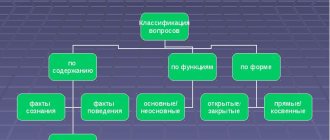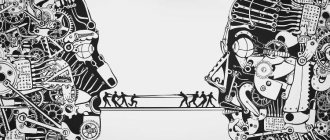The role of emotions
Reflective and evaluative role of emotions. Emotions give a subjective color to what is happening around us and within us. This means that different people can have different emotional reactions to the same event. For example, a loss to a favorite team may cause disappointment or sadness among fans, but happiness among fans of another team. And a work of art can evoke opposite emotions in different people. It’s not for nothing that they say: “There is no colleague according to taste and color.”
Emotions help evaluate not only past and current actions and events, but also future ones, involving them in the process of probabilistic forecasting (the expectation of pleasure when a person goes to the theater, or the expectation of discomfort after an exam when the student did not have time to properly prepare for it).
The controlling role of emotions. Emotions not only reflect the reality that surrounds a person and his attitude towards a particular object or event, but are also important for the control of human behavior, as one of the psychophysiological mechanisms of this control. The emergence of one or another attitude towards an object is influenced by motivation, the process of making a decision on an action or deed, and the accompanying physiological changes affect the quality of activity and human performance. Since emotions play a controlling role in human behavior and actions, they have a variety of positive functions: protective, mobilizing, resolving (switching), compensating, signaling, reinforcing (stabilizing), which are often combined with each other.
The protective function of emotions is associated with the emergence of fear. It warns a person about real or imaginary danger, thereby facilitating a better understanding of the situation and a more thorough determination of the likelihood of success or failure.
At the same time, fear protects a person from unpleasant consequences and, possibly, from death.
The mobilizing function of emotions is manifested, for example, in the fact that fear can help mobilize human reserves, for example, by releasing additional amounts of adrenaline in its active defensive form (flight) into the bloodstream. Enthusiasm and cheerfulness also contribute to the mobilization of physical strength.
The compensatory function of emotions is to compensate for information that is insufficient to make a decision or judgment about something. The emotions that arise when encountering an unfamiliar object give that object an appropriate connotation (bad or good person) due to its similarity to previously encountered objects. Although a person uses emotions for a generalized and not always justified assessment of an object and situation, it still helps him get out of a dead end when he does not know what to do in a specific situation.
The presence of reflexive and compensatory functions in emotions allows one to demonstrate the power function of emotions (to establish contact with the object or not).
The signaling function of emotions refers to the impact of a person or animal on another living object. Emotions usually have an external expression (facial expression) through which a person or animal communicates their state to another person or animal. It helps in mutual understanding in communication, prevents aggression from another person or animal, and also recognizes needs and states what the other subject currently has. The signaling function of an emotion is often associated with its protective function: a frightening appearance at a moment of danger contributes to the intimidation of another person or animal.
Academician P.K. Anokhin emphasized that emotions are important for fixing and stabilizing the rational behavior of animals and people. Positive emotions that arise when achieving a goal are stored and can be retrieved from memory in the appropriate situation to achieve the same beneficial result. Negative emotions retrieved from memory, on the other hand, warn against repeating mistakes. From Anokhin’s point of view, emotional experiences are recorded in evolution as a mechanism that keeps life processes within optimal limits and prevents the destructive insufficiency or excess of life factors Krylova A. A. Psychology, M., 2009. P. 118.
The disorganizing role of emotions. Fear can disorganize a person’s behavior in the context of achieving any goal and cause a passive-defensive reaction (stupor in case of strong fear, refusal to complete a task).
The disorganizing role of emotions also manifests itself in the case of anger, when a person tries to achieve a goal at any cost, foolishly repeating the same actions that do not lead to success. The positive role of emotions is not directly related to positive emotions, but the negative role is related to negative emotions. The latter can serve as an incentive for self-improvement, while the former can be a reason for complacency and self-affirmation. Much depends on a person’s determination and the conditions of his upbringing.
How to work with triggers and emotion scripts
You mentioned triggers that trigger emotions. What it is?
Yes, every emotion has a trigger . It may be in the external environment, or it may be “inside the psyche” (for example, you suddenly remember something and react to it).
Triggers can be learned to identify. We provide a special technique for this.
What happens after the trigger is fired?
A trigger runs a specific script or script . Let's return to the telephone example. Let's say a young man communicates with a girl. They have love. He calls her and finds that the subscriber does not answer or is temporarily unavailable. After some time, it turns out that at that time she was with someone else... What script will be written in the psyche of this guy? It is very likely that he will unconsciously connect these two events - the switched off phone and betrayal. And every time, faced with “subscriber unavailability”, he will automatically fall into an extremely dangerous state. Moreover, without even thinking about the fact that there may be dozens, if not hundreds, of reasons why the phone is turned off.
We teach how to identify such scripts and clean them out.
It turns out that we are still talking about some kind of rationality and the choice of our own emotions?
Yes, absolutely. Rather, it’s not even about choosing an emotion, but about the ability to connect the ability to analyze at the right moment. It's about awareness, as you understand.
I will repeat the central idea once again. It is important to admit that it is very difficult for you to control the psychophysiological process associated with emotions, and especially with the script that has already started. But by becoming aware of your emotional state, you can decide what to do or not do in this situation.
Can the script be adjusted?
Yes, the script can be changed or completely cleaned out. It’s not a fact that you will ever be able to detect and work through all the “negative scripts.” But it is true that you can reduce the strength of triggers.
For example, I have been keeping a so-called Anger Diary for a long time. Thanks to him, I learned to recognize by certain psychophysiological signs that I am in a state of anger. I record this fact. And I also record what (from my point of view) served as a trigger. I describe in detail the situation and my reactions to it. I analyze it.
Showing emotions
A person’s emotions can be judged by his self-report of the state he is experiencing, as well as by the nature of changes in psychomotor and physiological parameters: Facial expression, pantomime (posture), motor reactions, voice and autonomic reactions (pulse, blood pressure, breathing rate).
The human face has the greatest ability to express various emotional shades.
G. N. Lange, one of the most important experts in the field of studying emotions, described the physiological and behavioral characteristics of joy, sadness and anger. Joy is accompanied by excitation of the motor centers, resulting in characteristic movements (gesticulation, jumping, clapping), an increase in blood flow in small vessels (capillaries), as a result of which the skin of the body becomes red and warms up, and internal tissues and organs receive a better supply of oxygen , as a result of which metabolism begins to proceed more intensively. With sadness, the opposite changes occur: Inhibition of mobility and constriction of blood vessels. This causes a feeling of cold and chills. The narrowing of small vessels in the lungs leads to the outflow of blood from them, as a result of a deterioration in the flow of oxygen into the body, and the person begins to feel a lack of air, tightness and heaviness in the chest, and, trying to alleviate this condition, begins to take long and deep breaths. Appearance also betrays a sad person. His movements are slow, his arms and head are lowered, his voice is weak, and his speech is drawn out. Anger is accompanied by severe redness or paleness of the face and tightening of the muscles of the neck, face and arms (clenching the fingers into a fist).
Different people have different expressions of emotions, which is why we talk about a personal trait called expressiveness. The more a person expresses his emotions through facial expressions, gestures, voice, and motor reactions, the more expressive he is. The absence of external expression of emotions does not mean the absence of emotions; a person can hide his feelings, drive them deep into himself, which can cause long-term psychological stress, which negatively affects his health. People also differ in their emotional excitability, some react emotionally to the weakest stimuli, others - only to very strong psychology.
Nature, components and functions of emotional states
Emotional states are a person’s mental reactions to various life circumstances that determine the direction of his activities.
The emotional state influences a person’s decision-making, reaction to the behavior and actions of other people, self-efficacy and productivity. When a person is unable to control his own emotions, he begins to “control” them, that is, influence his actions, actions and behavior, which can ultimately lead to not very pleasant consequences.
An emotional state is a rather complex mental process that consists of three interrelated elements:
- The physiological component is an external reflection of what is happening in the body at the present time, when this or that emotional state is manifested. For example, increased heart rate and pulse, rapid breathing, etc.
- The psychological component characterizes the emotions directly experienced by a person. For example, sadness, anger, joy, etc.
- Behavioral component - expressed in the form of gestures, facial expressions, various actions (activity, lethargy, crying, aggression, etc.).
The physiological and psychological components represent the internal formation of a person’s emotional state, and the behavioral component characterizes its external manifestation.
Main features of emotional states:
- Polarity. Emotions can be both positive and negative. Additionally, a mixture of emotions may occur. For example, a person can love a person and at the same time feel anger or resentment towards him.
- Energy charge. According to intensity, a distinction is made between the Greek experience and the asthenic experience. The Greek experience is an experience that causes a person to become more active (delight, anger, excitement, etc.). Asthenic experiences are experiences that reduce a person’s activity (restlessness, sadness, darkness, etc.).
- Integrity. Emotions affect the entire human body and imply interaction between all psychophysical aspects of the personality, manifested in movements, behavior, thinking patterns, etc.
- Irreducibility. A person’s emotional state is closely related to all the processes occurring in his psyche. Emotions not only accompany the work of the senses, but also influence intellectual activity.
Functions of emotional states:
- Subjective function - the emotional state influences the formation of one’s point of view, and also allows one to establish contacts and connections with the outside world.
- Communicative function - allows you to determine the mood of another person, which allows you to properly establish contact with him, and in some cases even manipulate behavior.
- Behavioral function - the emotional state determines the direction of human behavior.
Problems related to emotional communication
It was already said above that the problem of emotional communication is its subjectivity. What you are trying to convey through nonverbal communication is not always understood by your opponent.
Another problem is the risk of falling for a manipulator. Usually people trust those who are inclined to communicate emotionally, to saturate their speech with gestures and facial expressions. Isn't it true, it seems that if a person is open, he cannot deceive. However, there are people who have skillfully learned to imitate emotions and take advantage of it.
Photo by Alex Green: Pexels
This often happens - knowing about your experiences, others can take advantage of them, betray and deceive you. Remember how many films and literary works are built on the basis of how a girl talks about her feelings and reveals her experiences. The one to whom she revealed herself tells the whole world about them.
The next problem is that participants in communication may be too emotional. So much so that after interaction they are left with emptiness inside. They gave their partner all their feelings, experiences and feel nothing else. Now, in order to return to normal, they will have to recover for a long time.
Communication is effective if all participants speak the same language. But if one person is emotional, expects his experiences to be understood, wants to see how his partner feels, and in response receives indifference or closedness, meaningful interaction is impossible.
Classification of the main types of emotional states
There are many different approaches to systematization and typology of types of emotional states.
The simplest and most common division is the following:
- Positive emotional states bring a person satisfaction, create a feeling of happiness and satisfaction from what is happening.
- Negative emotional states bring a person a state of dissatisfaction and bad mood.
- Neutral emotional states do not directly affect a person’s state, behavior and actions.
Another popular classification of emotional states is the Dodonov classification, in which states are divided into types depending on the functions they perform:
- Communicative - arise in a person in the process of communication.
- Altruistic - associated with the desire to bring benefit and pleasure to others.
- Practical - manifests itself when a person successfully accomplishes what he planned and gets the expected result.
- Glorik - associated with a person’s need for self-affirmation.
- External - associated with a person’s desire for danger and risk.
- Romance - associated with the desire to be unusual, non-standard, new.
- Aesthetic - arises in a person in interaction with the sphere of art.
- Gnostics - driven by a desire to learn something new.
- Acquired - based on collection and accumulation.
- Hedonic - caused by a feeling of pleasure from an activity.
How to overcome emotional communication problems
Communication in which you reveal your emotions and become a victim of manipulators can greatly hurt. However, the opposite situations, when you are confused about your feelings and cannot distinguish them from your partner’s experiences, cause discomfort.
Photo by Ketut Subiyanto: Pexels
To achieve effective communication, it is recommended to learn:
- Understand emotions. Moreover, the object should be both your experiences and the emotional response of those with whom you communicate. An important result of this skill is the ability to separate your emotions from others.
- Ease emotional pressure. Imagine that in a store an intrusive salesman is trying to sell you a mixer - you don’t need it, since you already have two at home. You need to resist his aggressive pressure and at the same time try to find the resources within yourself to take communication to a more adequate level. It's rude to say that you don't need anything. Or you can refuse gently and politely.
- Anticipate other people's emotional reactions. This is a difficult skill because emotions are constantly changing and, as already mentioned, they are subjective. And if you focus only on your experiences, you will probably find yourself in a difficult situation.
- Manage emotions and show composure. Having mastered this skill, you will be able to refrain from aggression, indignation, and other negative experiences if someone or something pisses you off.
It is impossible to imagine your life without emotional communication. Laughter, tears, smiles, despair - all these emotions accompany you at work, at home, on public transport. They remove barriers and lead to more productive interactions. At the same time, they can evoke powerful internal discomfort and turn you into a victim of a manipulator.










